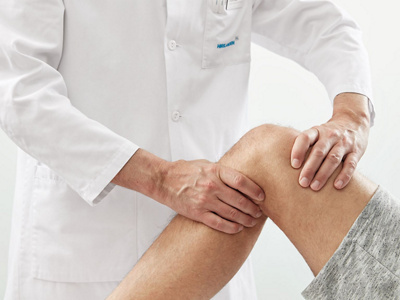Personalised prosthetics (customised joint replacement) represent the latest development in the treatment of joint diseases such as hip osteoarthritis, knee osteoarthritis or diseases of the shoulder joint. With the aid of three-dimensional computer models, this method is used to create customised joint prostheses that are tailored to the patients.
The personalised artificial joints are created in close collaboration between orthopaedic surgeons, radiologists, engineers and software developers.
Where standard prostheses were previously used, the affected joint is now first imaged and measured precisely with medical imaging techniques such as CT. 3D computer models of the knee are then created. This allows for computer simulations of how the artificial joint should fit and be implanted. Thanks to their clinical experience, the surgeon can simulate the joint replacement on the computer and adjust the model where necessary. At the end of this process, a joint replacement that is tailored to the individual patient situation, whether it be a partial or total prosthesis, is created with the aid of a 3D printer.
Compared to conventional artificial joints, the personalised prosthesis fits the diseased joint more accurately. While the bony structure of the knee needs to be adapted to the prosthesis when using a standard prosthesis, the prosthesis is adapted to the knee in the case of a personalised prosthesis. The bony joint shape is not changed, but only recoated to a certain extent. The natural, normal feeling of the joint can thus be retained better. As this is a comparatively new surgical method, there is a lack of long-term results for personalised prostheses. However, it can be assumed that the more precise fit of the prostheses will also have a positive effect on the long-term functioning and durability of the artificial joint.


